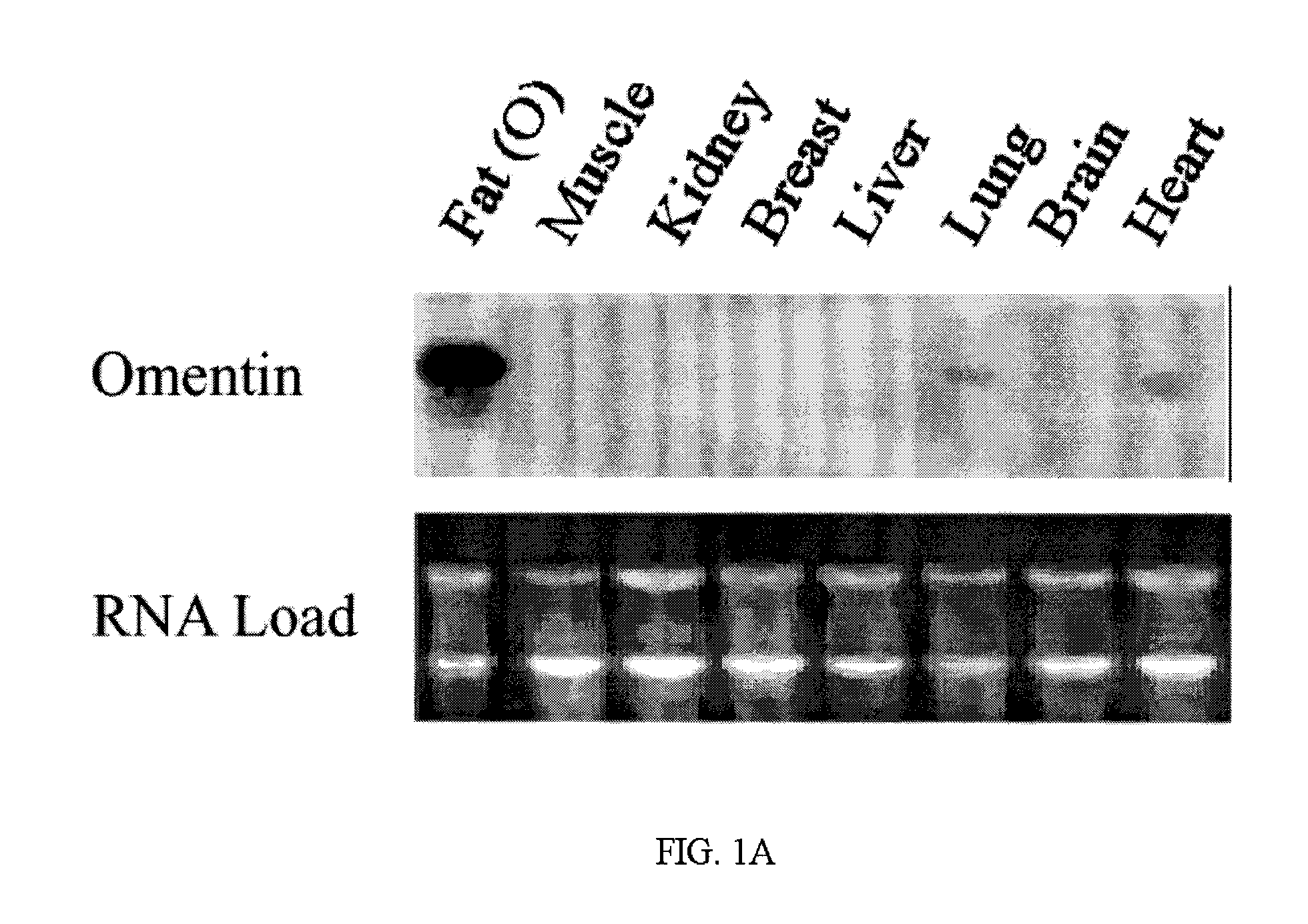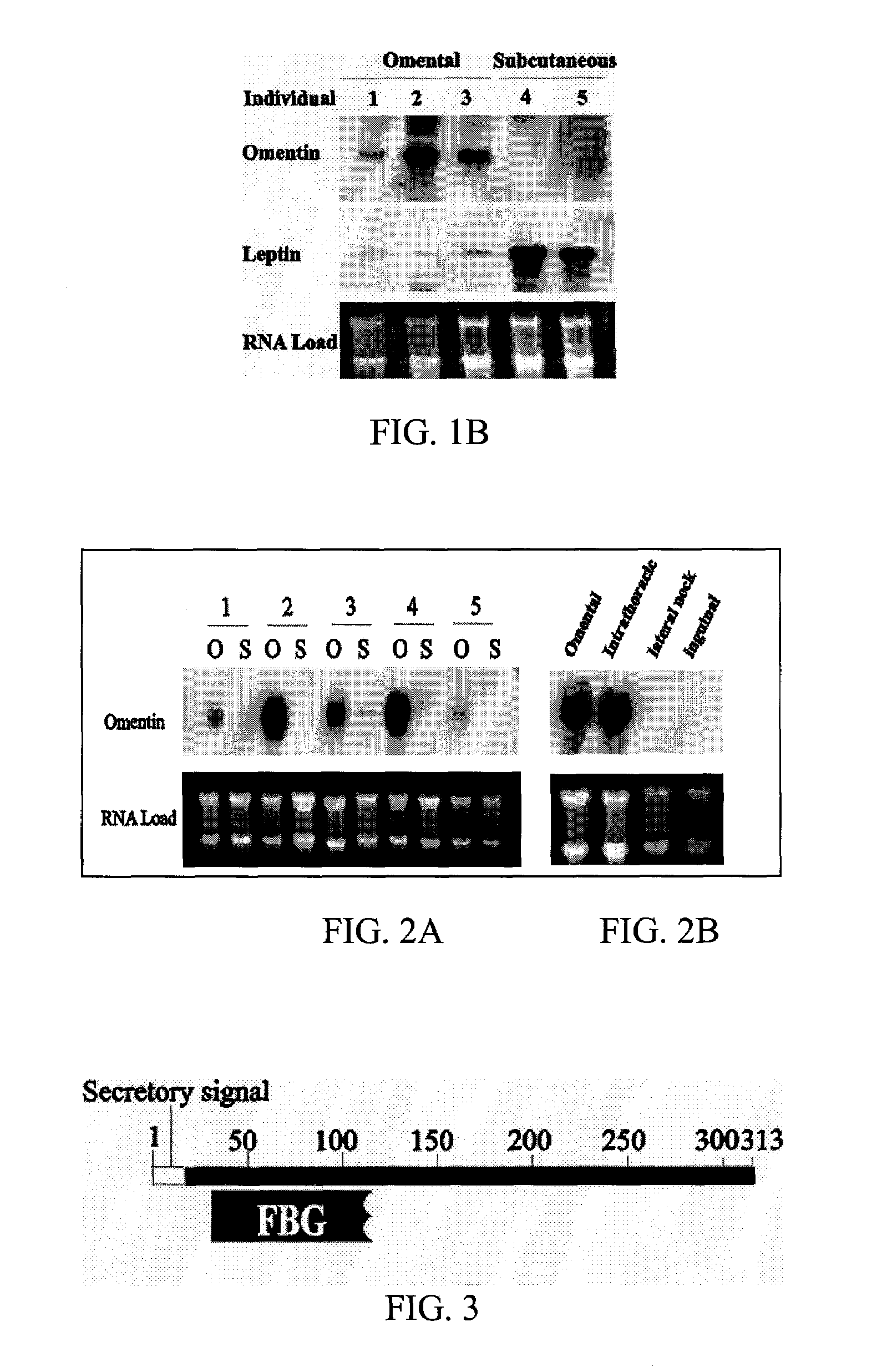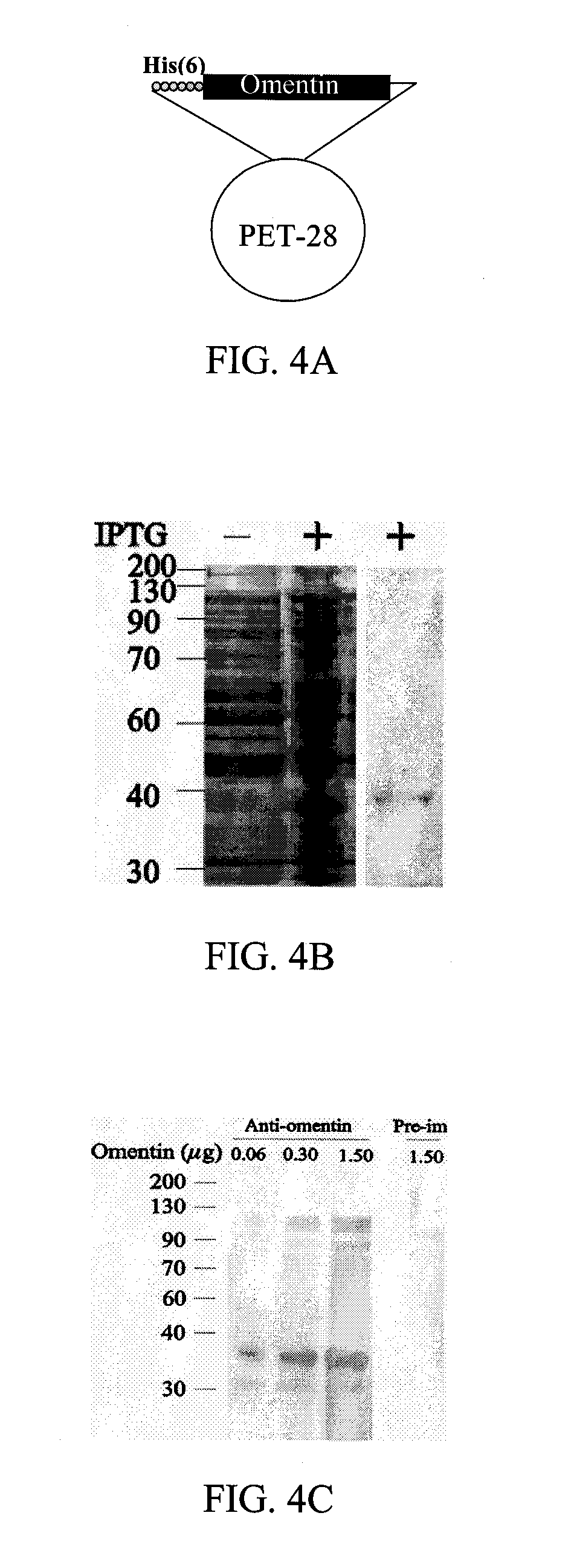Method of modifying glucose activity using polypeptides selectively expressed in fat tissue
- Summary
- Abstract
- Description
- Claims
- Application Information
AI Technical Summary
Benefits of technology
Problems solved by technology
Method used
Image
Examples
Embodiment Construction
[0056]The present invention relates to polypeptides, referred to herein generally as omentin or omentin polypeptide, selectively expressed in human and other animal omental fat depots, and generally not in subcutaneous fat depots, as well as methods of use of the polypeptides.
[0057]In one embodiment of the invention, the omentin polypeptide includes an amino acid sequence of SEQ ID NO:1. The nucleotide sequence for the messenger RNA (mRNA) of SEQ ID NO:1 is SEQ ID NO:2. The present invention also includes variants of the polypeptide of SEQ ID NO:1, i.e., polypeptides that vary by conservative amino acid substitutions, whereby a residue is substituted by another with like characteristics.
[0058]In one embodiment of this invention, the variant polypeptides for use in the methods of this invention have at least 70% identity, preferably at least 80% identity, more preferably at least 85% identity, more preferably at least 90% identity, and desirably at least 95% identity, to the amino ac...
PUM
| Property | Measurement | Unit |
|---|---|---|
| Transport properties | aaaaa | aaaaa |
Abstract
Description
Claims
Application Information
 Login to View More
Login to View More - R&D
- Intellectual Property
- Life Sciences
- Materials
- Tech Scout
- Unparalleled Data Quality
- Higher Quality Content
- 60% Fewer Hallucinations
Browse by: Latest US Patents, China's latest patents, Technical Efficacy Thesaurus, Application Domain, Technology Topic, Popular Technical Reports.
© 2025 PatSnap. All rights reserved.Legal|Privacy policy|Modern Slavery Act Transparency Statement|Sitemap|About US| Contact US: help@patsnap.com



